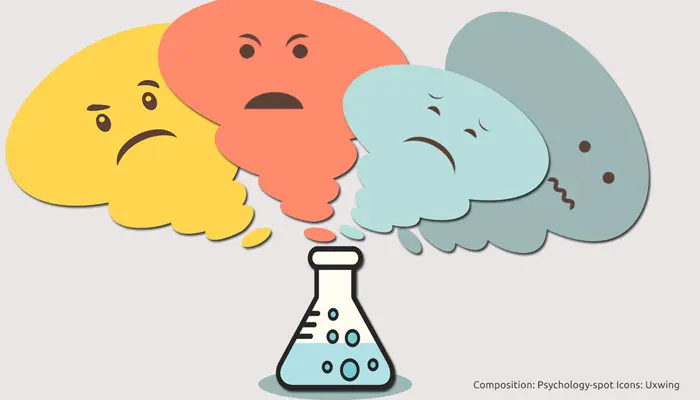
Do you often repeat to yourself “my anger is out of control?”
Do you let anxiety, fear or anger to take control in the most inopportune moments?
The good news is that there’s a very simple and quick strategy to avoid an emotional hijacking. We can anticipate those emotions and keep them from growing to the point they cause discomfort and affect our performance. You only need to learn to label the emotions.
Label your emotions
Whatever your emotions are, if you feel sad, angry or anxious, simply label this state, put it into words.The process of labeling the emotions and feelings involves relating a word to a combination, often chaotic, of mental and physical sensations. In fact, it is sometimes difficult to determine exactly how we feel. However, finding a word for our state helps us to better manage our emotions.
Anyway, it should be clarified that emotions are not our enemy, just the opposite. Emotions have a huge adaptive value because they’re a sign of our most primitive brain telling us of the risks or opportunities we have on our horizon. Emotions are a powerful incentive for action.
Still, when emotions are too intense, they end up overwhelming us and lose their adaptive power because they take control silencing the rational brain, and causing us to make bad decisions. To prevent this scenario, in which we lose the control, we just have to label the emotions.
How does this technique work?
Recently, a study by psychologists at UCLA revealed why finding a word to define the emotional chaos that we are experiencing it is such a powerful tool of self-control.In a series of studies, these researchers noted that people were labeling what they were feeling, and emotions such as anger and fear showed less activation of the amygdala, the part of the brain that governs emotions and fight-flight . At the same time, is appreciated a greater activity in the right ventrolateral prefrontal cortex, the area of the brain responsible for modulating the overreactions that triggers the amygdala.
In practice, the simple fact to label what we’re feeling makes us moving from an “emotional state” to a “rational state”. In this way, we can’t only prevent the negative emotions from growing enormously but we can also control impulsivity and react more calmly, enhancing our self-control.
It seems that the simple fact of having to label what we’re experiencing, forces us to use the rational part of our brain making us take a step back and view the situation more in perspective, almost as if we were an outside observer. And that’s enough to regain the control we were about to lose.
How to put this technique into practice?
If you’ve ever searched in your emotions, at first it will be difficult to find the right word to express what they are feeling. Therefore, it is convenient to practice several minutes a day, until you learn to quickly identify your emotions.You have to stop and think about how you feel at that moment. However, it’s not only to label the emotion. Once you find the right word, make a pause. Focus on that emotion and the reactions aroused. But don’t judge, do not use words like positive or negative, good or bad, just say: “Ok, now I feel anxious” or “I feel angry, it is a natural response in this situation”.
Identifying what you are feeling and, above all, accepting those emotions, won’t only allow you to reduce the level of tension but will also help to better tolerate stress when you have to face similar situations in the future.
At this point, you’ve nothing more to do but “sit next to that emotion” and consider carefully what will be your next step. For example, you can say: “I feel irritable. Right now I can’t make a good decision, I’d better take a walk to calm down”.
The labeling of emotions is a particularly useful technique when you feel nervous before giving a speech in public, when you start to get angry in an argument to prevent losing the control, or when you’re irritated because something has gone wrong in your daily routine.
Source:
Lieberman, M. D. et. Al. (2007) Putting feelings into words: affect labeling disrupts amygdala activity in response to affective stimuli. Psychological Science; 18(5): 421-428.



